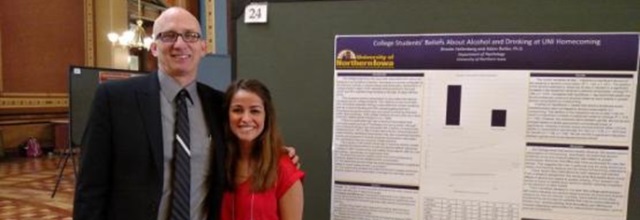Honors Program Theses
Award/Availability
Open Access Honors Program Thesis
First Advisor
Sarah Vander Zanden
Keywords
Music in education; Reading (Preschool);
Abstract
Students spend as many as nineteen years in a classroom by the time they are twenty-two. They have countless teachers who all teach in a different style and say that it is the best way for their students to learn. Students have experienced classrooms where they are given a lecture for an hour and then expected to know and understand the content when the test comes. They have also experienced classrooms where they are up and moving, creating models, doing research, or conducting experiments, throughout the class to come to an understanding to share with their peers on the topic given. Teachers are working to provide the best education they can for their students. In the early childhood field teachers have to focus on keeping students engaged more than their counterparts in secondary education may have to because of the younger students’ short attention spans. The teachers are working to create effective learning environments while keeping the students involved. Many different styles of teaching have attempted to create this environment for the students.
Educators a strive to implement the best practices for instruction in their classrooms. They are constantly working to improve their educational practices and make learning come alive for their students. Music is often a method chosen to engage the students in their learning. Fisher and McDonald (2001) said this about music and literacy in the classroom, “Early literacy/music teaching processes are a natural and frequently occurring instructional component prevalent in many classrooms which serve to heighten children’s understanding of new vocabulary within meaningful, active, and expressive contexts” (p. 110). The integration of music is brought up as a positive inclusion in a classroom, but is it actually a positive thing, and if it is, how do teachers effectively integrate music into their classroom?
This case study describes the ways in which music is integrated into early literacy education in a preschool classroom setting. This case study will document what music integration and early literacy instruction in a mostly English Language Learning preschool classroom looked like. It will also examine the perceived benefits and challenges of music integration and early literacy instruction. Finally, recommendations are provided for integrating music in early literacy education for teachers in other settings. There is a fair amount of research on this topic already but it comes from different fields and therefore is missing connections and consistency between the topics. This case study looks at music integration in early literacy practices from all three lenses to begin to bridge the three fields of research. Teachers have limited time to search through research for best practice ideas and having a study that looks at music integration and early literacy practices from all three perspectives can ease that time commitment from teachers.
Year of Submission
2016
Department
Department of Curriculum and Instruction
University Honors Designation
A thesis submitted in partial fulfillment of the requirements for the designation University Honors
Date Original
12-2016
Object Description
1 PDF file (1 volume (unpaged))
Copyright
©2016 Ann Strom
Language
EN
File Format
application/pdf
Recommended Citation
Strom, Ann, "Observations of music and literacy in early childhood education" (2016). Honors Program Theses. 253.
https://scholarworks.uni.edu/hpt/253



